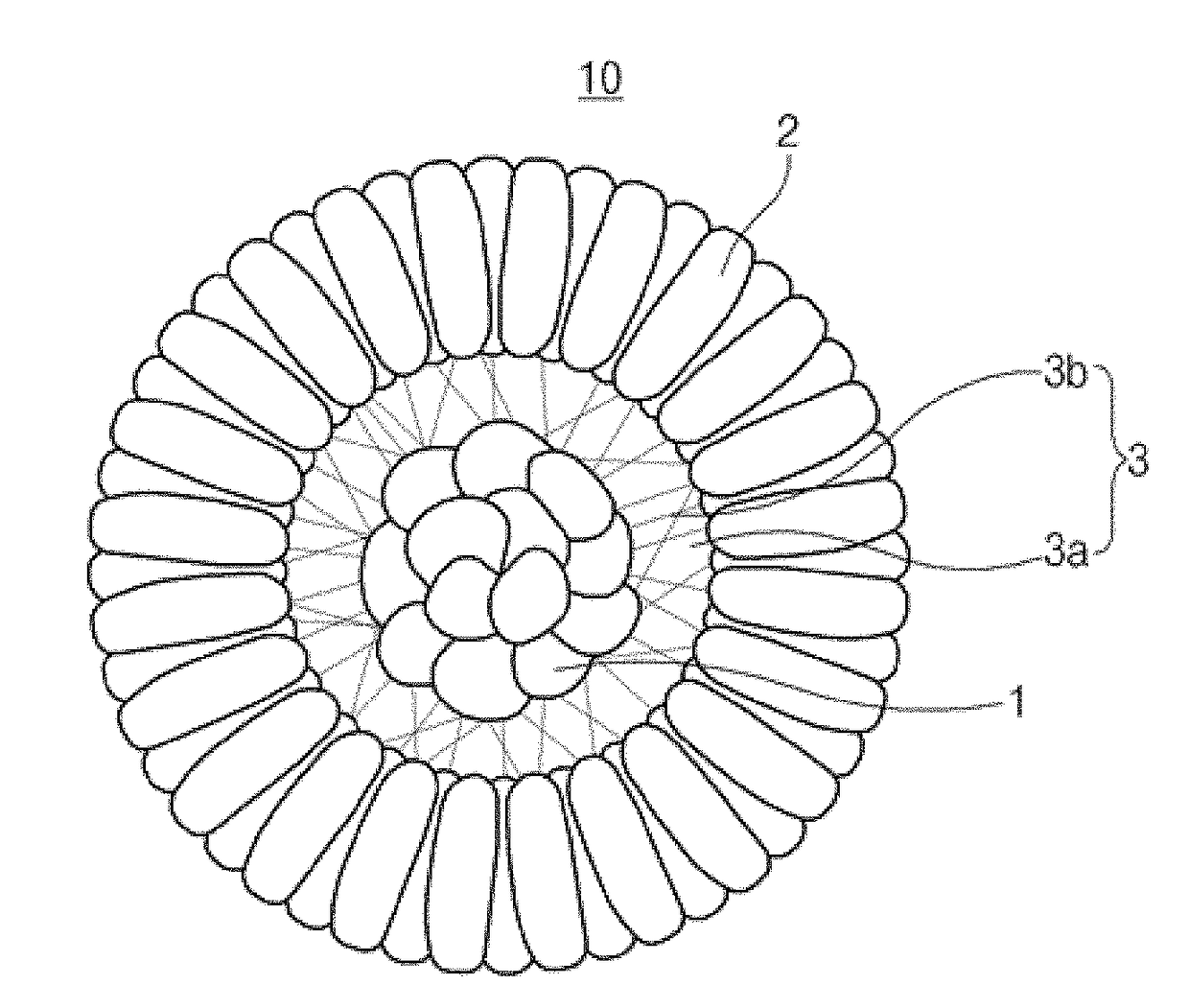Positive electrode active material for secondary battery, method of preparing the same and secondary battery including the same
a secondary battery and active material technology, applied in the field of secondary batteries, can solve the problems of lithium secondary batteries with the drawback of drastic decrease in lifespan, limitation to the technology of making high-capacity batteries, and serious problems, and achieve the effects of high voltage, low rate capability, and high capacity
- Summary
- Abstract
- Description
- Claims
- Application Information
AI Technical Summary
Benefits of technology
Problems solved by technology
Method used
Image
Examples
example 1
on of Positive Electrode Active Material
[0181]In a 5 L batch-type reactor set at 60° C., a 2M mixed solution of first metal raw materials was prepared by mixing nickel sulfate, cobalt sulfate and manganese sulfate in water at a molar ratio of 80:10:10. Separately, a 2M mixed solution of second metal raw materials was prepared by mixing nickel sulfate, cobalt sulfate and manganese sulfate in water at a molar ratio of 40:30:30. A container with the mixed solution of the first metal raw materials was connected to be added into the reactor, and a container with the mixed solution of the second metal raw materials was connected to be added into the container with the mixed solution of the first metal raw materials. In addition, a 4M NaOH solution and a 7% NH4OH aqueous solution were prepared and then each connected to the reactor.
[0182]3 L of deionized water was added to a coprecipitation reactor (capacity: 5 L), and purged with nitrogen gas in the reactor at a rate of 2 L / min to remove ...
example 2
on of Positive Electrode Active Material
[0185]A surface treatment layer was formed by mixing 1 wt % of 100 nm alumina (Al2O3) particles with respect to the positive electrode active material prepared in Example 1, and thermally treating the resulting mixture for 5 hours at 400° C. in the atmosphere.
example 3
on of Positive Electrode Active Material
[0186]A surface treatment layer was formed by mixing 0.1 wt % of boric acid (Samchun Chemical Co., Ltd.) with respect to the positive electrode active material prepared in Example 1, and thermally treating the resulting mixture for 5 hours at 400° C. in the atmosphere.
PUM
 Login to View More
Login to View More Abstract
Description
Claims
Application Information
 Login to View More
Login to View More - R&D
- Intellectual Property
- Life Sciences
- Materials
- Tech Scout
- Unparalleled Data Quality
- Higher Quality Content
- 60% Fewer Hallucinations
Browse by: Latest US Patents, China's latest patents, Technical Efficacy Thesaurus, Application Domain, Technology Topic, Popular Technical Reports.
© 2025 PatSnap. All rights reserved.Legal|Privacy policy|Modern Slavery Act Transparency Statement|Sitemap|About US| Contact US: help@patsnap.com


